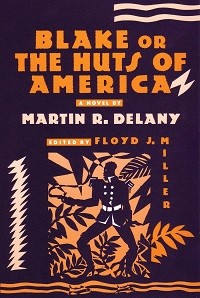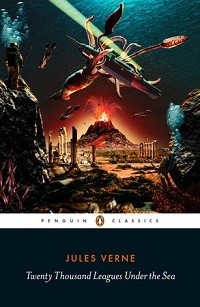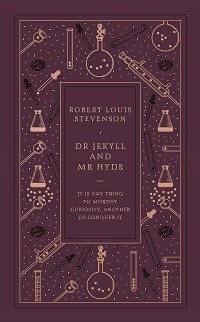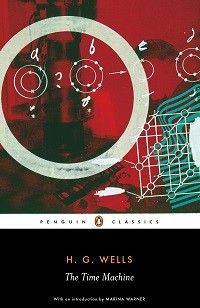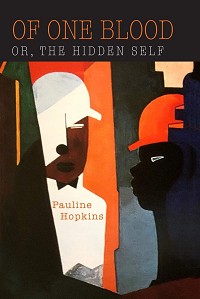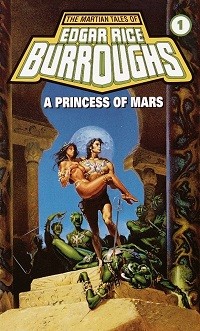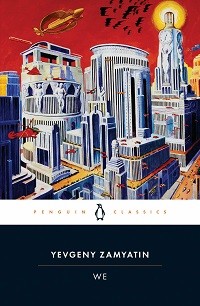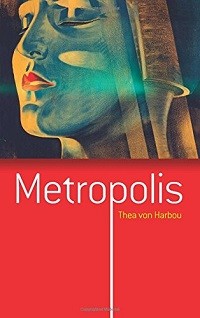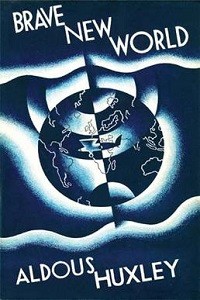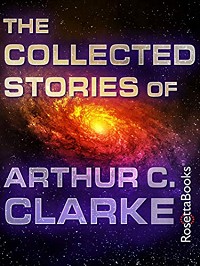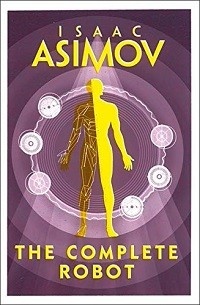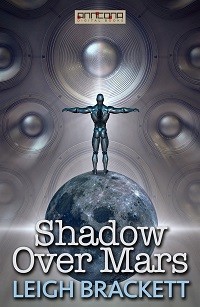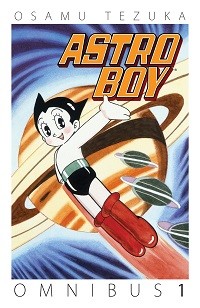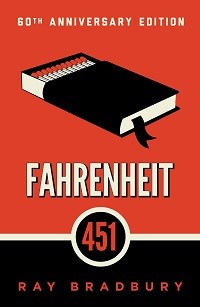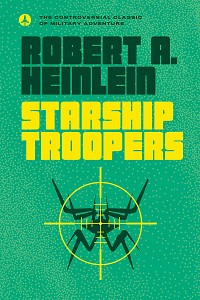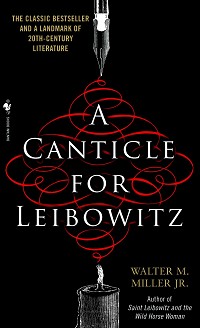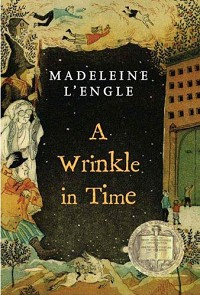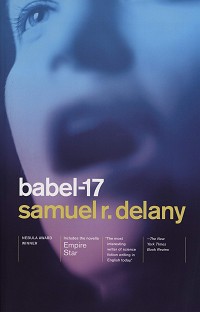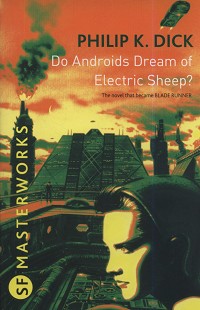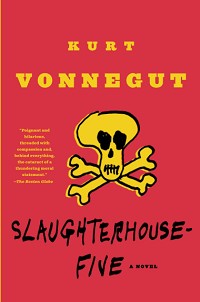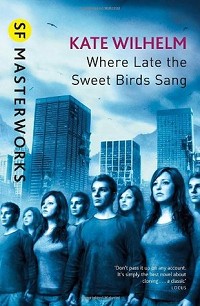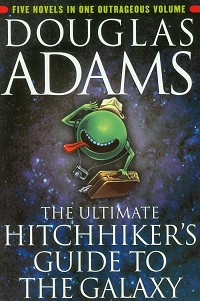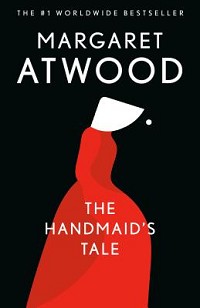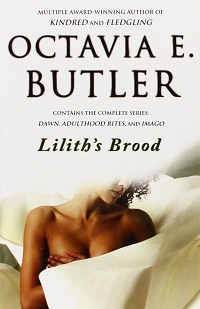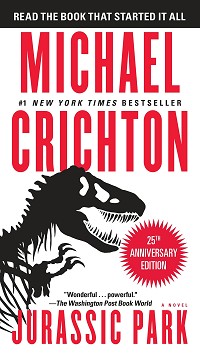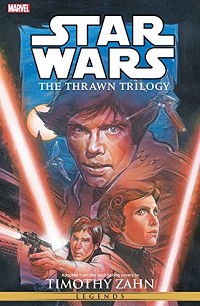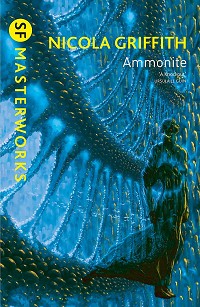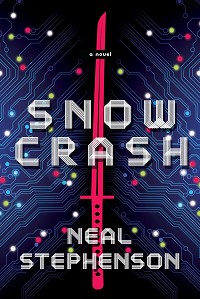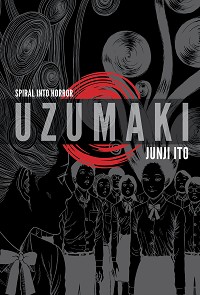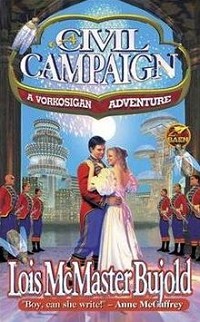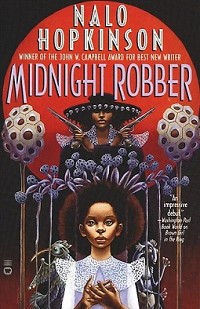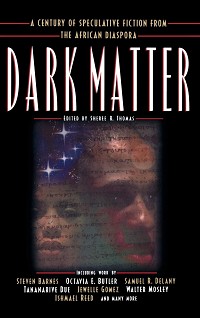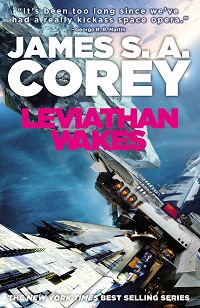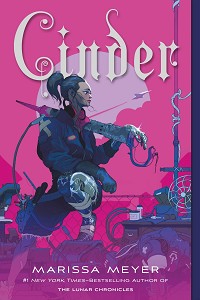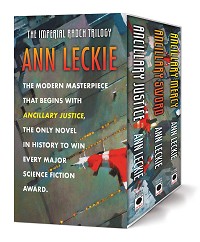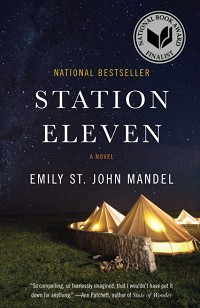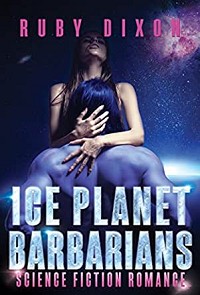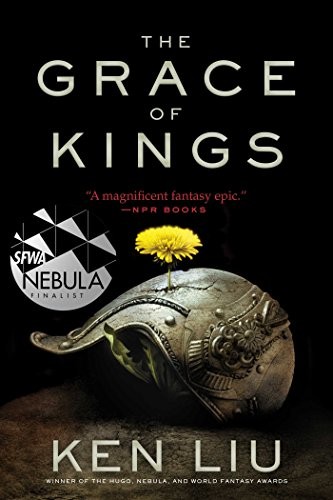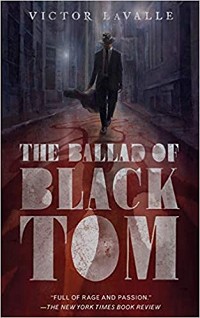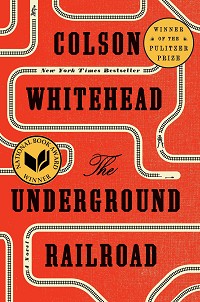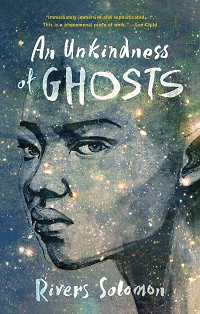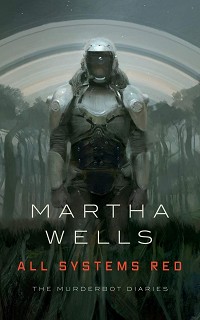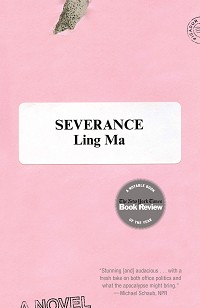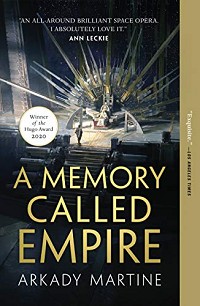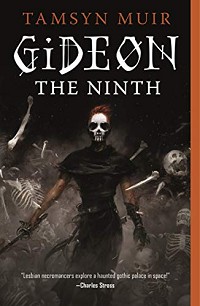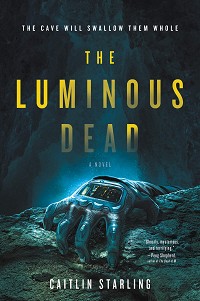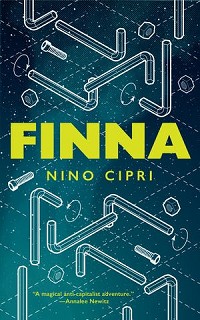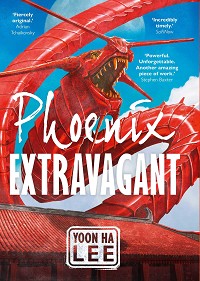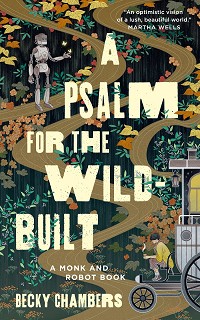As we explore the realm of science fiction, a fundamental question arises: do we discuss hopes for a brighter future or fears of creating a reality that could ultimately destroy us? The answer, much like the genre’s rich history, lies in both. Since the early 19th century, humanity has been captivated by its capacity to push boundaries and defy conventions in pursuit of progress.
This drive has manifested in various forms throughout history, with our collective optimism often oscillating between cautious enthusiasm and resigned despair in response to shifting social and political climates. Despite periods of profound pessimism, when we felt as though we’d lost a cosmic game, humanity has consistently found solace in crafting new futures for itself through literature and imagination.
This enduring fascination is not only a testament to science fiction’s staying power but also to the indomitable spirit of our species. The most influential sci-fi books have had far-reaching impacts on multiple genres, including horror, fantasy, and manga, inspiring filmmakers and shaping real-world scientific advancements. In their absence, our world would likely be vastly different.
The Most Influential Sci-Fi Books of All Time
Frankenstein by Mary Shelley (1818)
Mary Shelley’s Frankenstein, widely regarded as a pioneering work in the sci-fi genre, delves into the consequences of humanity’s quest to manipulate nature. The novel not only explores the implications of scientific hubris but also probes the very essence of what it means to be human, inviting readers to contemplate the boundaries that distinguish us from other creatures.
Blake, or the Huts of America by Martin R. Delany (1859-1862)
Samuel R. Delany, an author unaffiliated with Martin R. Delany, described Blake, or the Huts of America as ‘an sf-style alternate history novel’ in its proximity to the genre. Written by Martin R. Delany and serialized between 1859 and 1862 in The Anglo-African Magazine, this novel explores the hypothetical consequences of a large-scale slave uprising in the Caribbean and American South, led by a free-born enslaved individual whose spouse is subsequently sold away from him.
Twenty Thousand Leagues Under the Sea by Jules Verne (1869)
Jules Verne’s literary prowess was a precursor to technological innovation, as his novels predicted the development of various modern technologies, including solar-powered space travel and video conferencing platforms like Zoom. However, it is Captain Nemo’s Nautilus in Twenty Thousand Leagues Under the Sea that stands out for its prophetic accuracy. Verne’s depiction of an electric submarine predates the real-life Peral by nearly 20 years, showcasing his remarkable foresight.
Moreover, Verne’s trio of iconic novels – Twenty Thousand Leagues Under the Sea, Around the World in Eighty Days, and Journey to the Center of the Earth – laid the groundwork for the sci-fi adventure fiction genre, solidifying his legacy as a visionary storyteller.
The Strange Case of Dr. Jekyll and Mr. Hyde by Robert Louis Stevenson (1886)
Robert Louis Stevenson’s Dr. Jekyll is often regarded as the quintessential embodiment of a well-intentioned yet ultimately doomed scientist. His tragic struggle with the darker aspects of his own psyche has had a lasting impact on popular culture, inspiring a wide range of creative works that pay homage to this classic tale. From the iconic depiction of Dr. Jekyll’s alter ego, Mr.
Hyde, in film and literature, to comedic interpretations such as The Nutty Professor and Family Matters, the allure of Jekyll’s dual identity has captivated audiences for generations.
The Time Machine by H.G. Wells (1895)
In H. G. Wells’s seminal work, The Time Machine, readers are treated to a rich tapestry of science fiction themes and ideas that continue to captivate audiences today. The novel’s protagonist, an unnamed Time Traveller, embarks on a journey through time, spanning over 800 millennia, during which he discovers a future where human evolution has taken a starkly class-divided turn.
Further travels reveal a post-apocalyptic landscape that, although distinct from modern-day visions of a ravaged Earth, nonetheless offers a thought-provoking commentary on the consequences of unchecked industrialization – an early precursor to the now-popular genre of cli-fi (climate fiction).
Of One Blood, or The Hidden Self by Pauline Hopkins (1902-1903)
Pauline Hopkins’s Of One Blood tells the story of Reuel, a Harvard-educated individual who is mixed-race and passes as white, but discovers startling truths about Africa’s history and its contemporary relevance when he stumbles upon an advanced underground civilization beneath an archaeological dig site in Ethiopia. This narrative will resonate with fans of Marvel’s Black Panther and Nnedi Okorafor’s Africanfuturist novels, which explore the intersection of technology, culture, and identity.
A Princess of Mars by Edgar Rice Burroughs (1912)
Pulp science fiction has captivated audiences for over a century, with its blend of action, adventure, and otherworldly intrigue. One such classic is Edgar Rice Burroughs’ debut novel, ‘A Princess of Mars’, which introduces readers to John Carter, a former Confederate soldier who finds himself transported to the planet Mars.
While some may view Burroughs’ portrayals of women and people of color as lacking, his work had a profound impact on the sci-fi genre, setting the stage for decades of pulp-inspired storytelling that continues to thrill fans today.
We by Yevgeny Zamyatin (1924)
Yevgeny Zamyatin’s influential novel ‘We’ was surprisingly published in English 30 years prior to its original Russian release. This pioneering work of dystopian fiction transported readers to the One State, a totalitarian government that enforced strict conformity among its citizens. The narrative unfolded within glass-enclosed structures and assigned numerical designations instead of personal names.
Zamyatin’s prophetic vision of a bleak future had a profound impact on several notable writers, including George Orwell, Kurt Vonnegut, and potentially Aldous Huxley.
Metropolis by Thea von Harbou (1925)
While existential dread over automation may have begun with the Luddites in the early 19th century, Thea von Harbou’s 1925 novel, Metropolis, brought these fears into the modern age. Like H. G. Wells’ Time Machine, this novel envisions a future where the lower classes toil underground to maintain the luxurious lifestyles of the wealthy above.
Von Harbou’s work sparked a chain reaction of interpretations across various media, inspiring Fritz Lang’s 1927 film adaptation, which in turn influenced Osamu Tezuka’s 1949 manga and its subsequent 2001 anime film adaptation.
Brave New World by Aldous Huxley (1932)
In Aldous Huxley’s iconic novel, London of the future is reimagined as a dystopian society where free love and mandatory drug use reign supreme. Meanwhile, the nuclear family has been decimated, leaving only fragments of its former self. Amidst this chaos, John – a natural-born child who was gestated and birthed like any human being – finds himself torn from his life on a ‘Savage Reservation’ and thrust into the midst of London’s opulence.
However, he soon discovers that the comforts he had anticipated are unbearable, highlighting the stark contrast between the supposed utopia and the harsh realities he faces.
The Collected Stories of Arthur C. Clarke by Arthur C. Clarke (1937-1999)
Arthur C. Clarke’s works are notable for their thought-provoking exploration of the intersection between religion and science. His stories, such as ‘The Star,’ ‘siseneG,’ and ‘The Nine Billion Names of God,’ grapple with the enigmatic concept of a higher power in the context of technological advancements.
Rather than selecting just one standout piece, Clarke’s oeuvre is rich enough to warrant a recommendation that spans more than 60 years of his short fiction, meticulously collected into a single volume.
The Complete Robot by Isaac Asimov (1939-1977)
The influence of Isaac Asimov’s work is undeniable, particularly when it comes to his iconic Three Laws of Robotics. While it’s challenging to pinpoint a single favorite from his extensive bibliography, the widespread adoption of these principles across sci-fi literature gives The Complete Robot a distinct edge. This 1982 publication showcases 31 of Asimov’s short stories that explore various forms of artificial intelligence, offering readers a fascinating glimpse into the minds of automatons.
Shadow Over Mars by Leigh Brackett (1944)
In the realm of science fiction, few authors have earned the moniker ‘Queen of the Space Opera’ like . Her debut novel, The Nemesis from Terra, tells the tale of Rick Urquhart, a rough-around-the-edges drifter who’s struggling to make ends meet. But there’s more to Rick than meets the eye – he’s prophesied to rule over all of Mars, and his journey will take him up against Martian royalty and corporate interests alike.
With its pulpy, prototypical style, Shadow over Mars is a thrilling ride that’s often overlooked in favor of more flashy titles.
Nineteen Eighty-Four by George Orwell (1949)
George Orwell’s iconic dystopian novel, Nineteen Eighty-Four, is so influential that its impact extends far beyond those who have actually read it. The book introduced numerous new words and phrases into the English language, including the now-ubiquitous terms Big Brother, doublethink, newspeak, and thoughtcrime. Moreover, some argue that Orwell’s prophetic novel may have anticipated the rise of smartphone data collection, a phenomenon that has become increasingly prevalent in recent years.
Although We predates Orwell’s novel by nearly a quarter century, Nineteen Eighty-Four has created a lasting blueprint for dystopian fiction that continues to shape the genre even today.
Astro Boy by Osamu Tezuka (1952-1968)
While Astro Boy may not have been the pioneering work that introduced robots with emotions, its impact on the literary world is undeniable. As one of the most influential manga series in postwar Japan, it played a crucial role in establishing the country’s animation industry standards.
The anime adaptation, which debuted as the first commercial animated TV program in Japan, according to Tezuka’s official website, not only contributed to the evolution of Japanese animation but also paved the way for countless sci-fi readers who grew up with a passion for anime. For those who have come to love this genre, Astro Boy is a work that demands gratitude.
Fahrenheit 451 by Ray Bradbury (1953)
Starship Troopers by Robert A. Heinlein (1959)
The influence of Robert A. Heinlein’s classic novel, Starship Troopers, is still felt in modern science fiction, particularly in depictions of space battles and alien encounters. However, readers familiar with the 1997 film adaptation may be surprised to discover that the book takes a more serious tone, eschewing the satirical approach of the movie.
In fact, Heinlein’s novel often presents a straightforward, unvarnished portrayal of military life, including themes like total war and capital punishment, which can be jarring for some readers. While Starship Troopers may not appeal to everyone’s tastes, its impact on the military science fiction sub-genre is undeniable.
A Canticle for Leibowitz by Walter M. Miller Jr. (1959)
The post-apocalyptic genre has been a staple in literature since Mary Shelley’s plague novel, The Last Man, was published in 1826. Today, you can’t flip through a bookshelf or browse online without stumbling upon a post-apocalyptic story. It’s no surprise that Walter M. Miller’s only novel, A Canticle for Leibowitz, is a Hugo Award winner that has maintained its relevance and popularity since its release.
This sci-fi novel was one of the first to transcend traditional genre boundaries, offering a thought-provoking exploration of the aftermath of nuclear war on a fractured secular society and the Catholic monastery trying to minister to it in the face of devastation.
A Wrinkle in Time by Madeleine L’Engle (1962)
While science fiction may have its devoted fans, one novel that has played a significant role in paving the way for many is Madeleine L’Engle’s A Wrinkle in Time. Writing for Early Bird Books, Molly Reiniger highlights how this children’s novel not only sparked interest in science fiction and fantasy but also inspired young girls to become dedicated readers and writers of the genre.
The story follows a group of child heroes accompanied by their mystical guides as they traverse different dimensions, reminiscent of Jonathan Swift’s Gulliver and H. G. Wells’ Time Traveller. For many lifelong sci-fi enthusiasts or women in STEM fields, there’s a strong likelihood that L’Engle’s work has had a lasting impact on their passion for the genre.
Dune by Frank Herbert (1965)
The notion of discussing the most influential science fiction books of all time would be incomplete without mentioning the iconic novel Dune, penned by Frank Herbert in 1965. This masterpiece seamlessly integrates elements from court intrigue, witchcraft, climate change, cultural clashes, and military science fiction within a narrative centered around a teenage savior.
The enduring impact of Dune can be seen in its influence on popular works such as Star Wars and Hayao Miyazaki’s Nausicaä of the Valley of the Wind. Furthermore, the 1992 video game adaptation, Dune II: The Building of a Dynasty, is widely regarded as one of the pioneering real-time strategy (RTS) games, according to Vintage Games co-authors Bill Loguidice and Matt Barton.
Babel-17 by Samuel R. Delany (1966)
While not as widely recognized as some of Samuel R. Delany’s other works, such as the iconic Dhalgren published in 1975, Babel-17 still made a significant impact upon its release due to its innovative manipulation of language. This early sci-fi exploration of the Sapir-Whorf hypothesis takes center stage as a former military cryptographer is tasked with deciphering the titular code used by enemy forces prior to their attack maneuvers.
However, what initially appears to be a complex code is ultimately revealed to be a fully-fledged language, and Delany’s protagonist becomes increasingly consumed in uncovering its intricacies.
Do Androids Dream of Electric Sheep? by Philip K. Dick (1968)
It has been over 150 years since Mary Shelley first explored the essence of humanity. Philip K. Dick’s seminal work, Do Androids Dream of Electric Sheep?, was born from this inquiry and has had a profound impact on science fiction. The novel serves as the inspiration for Ridley Scott’s Blade Runner, where it delves into the story of an ordinary hitman who is tasked with tracking down advanced androids that have fled to Earth in search of freedom after initially escaping servitude on Mars.
The Left Hand of Darkness by Ursula K. Le Guin (1969)
By this point, any lingering doubts about the politicization of science fiction should be laid to rest. As a testament to its enduring impact, Ursula K. Le Guin’s seminal work ‘The Left Hand of Darkness’ stands as a prime example of how science fiction can effectively tackle complex issues like gender and politics.
The novel follows humanity’s emissary as he navigates an alien culture where individuals seamlessly transition between male, female, and agender identities over the course of their lives, offering a thought-provoking commentary on societal norms.
As the first installment in Le Guin’s Hainish Cycle, ‘The Left Hand of Darkness’ cleared the way for subsequent science fiction writers to engage with gender-related themes, fostering a rich literary landscape that continues to evolve and inspire today.
Slaughterhouse-Five by Kurt Vonnegut (1969)
In a bold and thought-provoking take on science fiction, Kurt Vonnegut’s Slaughterhouse-Five stands out for its unique portrayal of post-traumatic stress disorder through time travel. The novel follows World War II veteran Billy Pilgrim as he becomes ‘unstuck in time’, experiencing the world in non-linear fashion. With a simple action like flipping a light switch, Billy is transported to distant planets or sent back to the devastating firebombing of Dresden.
This critically acclaimed novel offers a poignant reflection on the lasting impact of war, making it a must-read for fans of science fiction and those looking beyond the military-focused subgenre.
Where Late the Sweet Birds Sang by Kate Wilhelm (1976)
In Kate Wilhelm’s thought-provoking novel, Where Late the Sweet Birds Sang, humanity’s struggle with infertility is reimagined through a cloning program designed to circumvent the problem. This post-apocalyptic tale earned Wilhelm the Hugo Award for Best Novel, making her the second woman to achieve this feat, following Ursula K. Le Guin who won twice for The Left Hand of Darkness and The Dispossessed.
However, Wilhelm’s impact may be most felt through her co-founding of the Clarion Workshop, an esteemed literary institution.
The Ultimate Hitchhiker’s Guide to the Galaxy by Douglas Adams (1979-1992)
Douglas Adams’ legacy in the realm of science fiction comedy is unparalleled. The Hitchhiker’s Guide to the Galaxy trilogy has had a profound impact on popular culture, inspiring the naming of not one but two species, two asteroids, and even a NASA project. This series has also made significant contributions to the sci-fi genre as a whole, with the number 42 becoming an iconic reference point.
Whether you’re drawn to Adams’ clever use of humor or his innovative storytelling, it’s clear that The Hitchhiker’s Guide to the Galaxy trilogy is a true classic that continues to captivate audiences today.
Daughters of a Coral Dawn by Katherine V. Forrest (1984)
The narrative bears a striking resemblance to Laura Lam’s Goldilocks. A group of women embark on a journey from Earth to establish a new home on a distant planet, leaving behind patriarchal structures and persecution. As they build their utopia, leader Megan grapples with the prospect of integrating their community with another group, led by the charismatic Laurel, when they arrive.
This early work of lesbian sci-fi, which went on to spawn a Lambda Literary Award-winning sequel in Daughters of a Coral Dawn, is often overlooked but remains a classic in its genre.
Psion by Joan D. Vinge (1982)
Prior to the iconic cyberpunk novel Neuromancer, published in 1984, another influential work emerged. Psion, a trilogy by Joan D. Vinge, consisting of Tiptree Award-winning Cat-see, Catspaw, and Dreamfall, revolves around Cat, an extraordinary being with alien-human heritage and street smarts. When his telepathic abilities are revealed upon his latest arrest, he becomes part of a government program to train as a special investigator.
This 1982 release has been recognized by the American Library Association as one of the Best Books for Young Adults, inspiring successive generations of young science fiction enthusiasts to explore the genre further.
Vampire Hunter D by Hideyuki Kikuchi and Yoshitaka Amano (1983-Present)
In 1983, the world was introduced to Vampire Hunter D, a groundbreaking series created by renowned author Kow Yokoyama, famous for his work on Demon City Shinjuku, and iconic illustrator Yoshitaka Amano, known for his contributions to the first six Final Fantasy games. This critically acclaimed light novel series follows the journey of a half-vampire outcast as he takes on the task of hunting down the powerful Nobles – a group of elite vampires who once dominated his world.
With 26 sequels and counting, Vampire Hunter D has captivated audiences with its unique blend of Eastern mysticism and Western frontier storytelling, inspiring countless creatives and cementing its status as a cult classic.
Akira by Katsuhiro Otomo (1982-1990)
While William Gibson is often credited with pioneering English cyberpunk literature, Katsuhiro Otomo is the true pioneer of Japanese cyberpunk. The 1988 anime film Akira, which was inspired by his work, takes place in post-apocalyptic Tokyo and follows the lives of two teenage bikers whose world is turned upside down when one of them begins to exhibit psychic abilities after being exposed to a mysterious government experiment gone wrong.
Neuromancer by William Gibson (1984)
To understand how a single novel can become synonymous with an entire sub-genre, consider William Gibson’s Neuromancer, published in 1984. This seminal work is so deeply ingrained in the cyberpunk genre that it has earned its own entry in Encyclopedia Britannica. As a result of its influence, Neuromancer not only established the core tropes of cyberpunk but also introduced the concept of ‘cyberspace’ to the science fiction community, effectively defining the genre’s boundaries.
The Handmaid’s Tale by Margaret Atwood (1985)
Margaret Atwood’s iconic dystopian novel, The Handmaid’s Tale, has been drawing parallels with contemporary politics for nearly four decades. Like George Orwell’s Nineteen Eighty-Four, these comparisons often overlook crucial aspects of Gilead’s oppressive society, particularly the white supremacy that lies at its core. This oversight serves as a stark reminder of how precariously close the United States frequently teeters to a catastrophic precipice.
Watchmen by Alan Moore and Dave Gibbons (1986-1987)
Fans of gritty superhero series like Invincible, The Boys, or those that dare to deviate from traditional portrayals of caped crusaders owe a debt of gratitude to Alan Moore and Dave Gibbons’ groundbreaking work in Watchmen. This seminal limited series challenged the notion of superheroes as morally superior saviors, instead presenting them as flawed, power-hungry, and sometimes reluctant guardians of humanity.
The impact of this bold storytelling has been felt across the genre, with creators continuing to explore and subvert these themes even today.
Lilith’s Brood by Octavia E. Butler (1987-1989)
Originally published in a single volume as Xenogenesis in 1989, Lilith’s Brood collects three interconnected novels – Dawn, Adulthood Rites, and Imago – from Octavia E. Butler. The narrative revolves around the remnants of humanity, ‘rescued’ from a nuclear-scarred Earth by the Oankali, a many-tentacled alien species seeking to interbreed with humans to introduce cancer to their own kind.
This peculiar and intense tale explores themes of intimacy, adaptation, and the blurring of lines between human and non-human. While it may not have been the sole catalyst for the ‘monster-loving’ trend, Lilith’s Brood undoubtedly contributes to its evolution.
Ghost in the Shell: Deluxe Complete Box Set by Masamune Shirow (1989-1997)
Masamune Shirow’s influential manga and anime franchise, Ghost in the Shell, has left an indelible mark on the world of cyberpunk. The series’ impact extends far beyond Japan, with numerous prominent filmmakers and directors drawing inspiration from its thought-provoking themes and innovative storytelling. This is perhaps best illustrated by the fact that James Cameron, Steven Spielberg, and the Wachowski sisters have all cited Ghost in the Shell as an influence on their own work.
Jurassic Park by Michael Crichton (1990)
While Steven Spielberg’s name is often synonymous with cinematic masterpieces, his work in 1993’s Jurassic Park played a significant role in igniting the passion for dinosaurs among millennials. This renewed enthusiasm was, in part, sparked by the 1988 animated film The Land Before Time, which Spielberg produced. However, it’s worth noting that the seeds of this fascination were first sown with Michael Crichton’s 1990 novel, a sci-fi thriller that brought Dr.
Grant and Ellie Sattler to life on the big screen.
Ring by Koji Suzuki (1991)
Koji Suzuki’s Ring has had a profound impact on the J-horror genre, spawning numerous films across the US, Japan, and South Korea. This influence extends far beyond its eerie atmosphere and blood-curdling scares, however. At its core, Ring is a thought-provoking science fiction mystery that delves into the consequences of watching a cursed videotape.
Rather than relying solely on supernatural terrors, the novel cleverly weaves together elements of science and horror to create a sense of unease that’s as much about the unknown as it is about the devastating effects of an ancient curse. As such, Ring represents a masterclass in balancing genres, offering a rich tapestry of themes and ideas that continue to captivate audiences today.
Pretty Guardian Sailor Moon by Naoko Takeuchi (1991-1997)
While not the original magical-girl manga, Sailor Moon is arguably the most iconic. Naoko Takeuchi’s 1990s space-fantasy series revolutionized the mahou shoujo genre by redefining what it means to be a hero. By infusing Usagi Tsukino and her friends with superhero powers and highlighting traditionally feminine pursuits like makeup, fashion, and all things adorable, Sailor Moon transformed the genre and cemented its place as a cultural phenomenon.
The Thrawn Trilogy by Timothy Zahn (1991-1993)
While it may seem unconventional, Timothy Zahn’s Thrawn trilogy played a significant role in shaping the continuation of the Skywalker saga for fans. Although no longer considered part of the official canon, Heir to Empire, Dark Force Rising, and The Last Command continue to be celebrated as some of the most thrilling sci-fi adventures featuring beloved characters.
Ammonite by Nicola Griffith (1992)
Nicola Griffith, a celebrated author and winner of the Lambda and Tiptree Awards, presents a thought-provoking tale in her novel Ammonite. Set on a colonized planet where a viral outbreak has decimated the population and altered the very fabric of those who remain, the story delves into the complexities of a world redefined by the aftermath of such a catastrophic event.
Griffith’s work draws parallels with Charlotte Perkins Gilman’s Herland, as both explore the notion of a society governed by women – an idea that has been examined before in science fiction, but Ammonite stands out as a masterful example of feminist science fiction writing, offering a nuanced and captivating portrayal of what such a world would truly entail.
The Children of Men by PD James (1992)
PD James’s dystopian masterpiece, Children of Men, has been recognized as a seminal work that has shaped our understanding of the world. Ranked among the BBC Arts’ esteemed list of ‘100 Novels That Shaped Our World’, this novel paints a haunting portrait of a near-future where humanity’s inexplicable sterility has brought about the collapse of society globally.
The setting, which takes place in a post-pandemic era, eerily mirrors the present day, with its stark depiction of a world willing to abandon its most vulnerable members. This unsettling narrative serves as a poignant reminder for contemporary readers, forcing them to confront the darkest aspects of human nature and our capacity for destruction.
Snow Crash by Neal Stephenson (1992)
In a remarkable coincidence, Neal Stephenson’s 1992 novel Snow Crash played a significant role in shaping the internet as we know it today. The book’s futuristic concepts and predictions not only anticipated the development of Google Earth but also inspired the creation of Second Life. Moreover, Stephenson’s use of the term ‘avatar’ to describe an online profile picture or character gained widespread acceptance, solidifying its place in the digital lexicon.
This tongue-in-cheek novel has had a profound impact on the internet’s evolution, making it a truly remarkable achievement.
Doomsday Book by Connie Willis (1992)
Connie Willis’s Doomsday Book is a must-read for anyone who enjoys stories about time-traveling academics. This Hugo and Nebula-winning novel follows a historian who becomes stranded in 14th century Oxford during the Black Death, after a global influenza outbreak spreads back to her home time from a trip to the past.
The book’s unique blend of historical fiction, science fiction, and adventure will appeal to fans of other stories about academics who travel through time, such as Jasper Fforde’s The Eyre Affair and Genevieve Cogman’s The Invisible Library. With its well-developed characters, richly detailed setting, and thought-provoking themes, Doomsday Book is a treat for readers who love to explore different eras and cultures.
Uzumaki by Junji Ito (1998-1999)
Junji Ito’s mastery of horror manga is unparalleled, especially when it comes to his magnum opus, Uzumaki. This three-part series, subtitled ‘Spiral into Horror’, seamlessly blends time travel with body horror, creating a thrilling and unsettling ride that showcases Ito’s unique ability to push boundaries and defy genre conventions.
While his influence on the horror genre is undeniable, it’s his unapologetic embrace of weirdness that truly sets him apart, earning him a place among the most innovative and unsettling creators in the medium.
A Civil Campaign by Lois McMaster Bujold (1999)
While romantic subplots are a staple in many science fiction and fantasy novels today, Lois McMaster Bujold’s A Civil Campaign stands out from the crowd. This novel masterfully blends Regency romance, cozy mystery, and space opera elements to create a captivating story that will leave readers enthralled. In fact, its unique fusion of genres was gaining popularity long before the rise of mashup novels like Pride and Prejudice and Zombies.
Bujold’s Vorkosigan Saga entry has been delighting fans for years, and A Civil Campaign is no exception.
Battle Royale by Koushun Takami (1999)
Prior to Suzanne Collins’ iconic trilogy, The Hunger Games, another influential work had already made its mark on the literary world. Koushun Takami’s debut novel, Battle Royale, introduced a similar premise where teenage protagonists are forced to fight each other to the death in a televised event, with their country’s entertainment at stake.
While Collins has never explicitly credited Takami’s work as an inspiration, online enthusiasts have discovered a connection between Takami’s novel and popular video games like Fortnite and PlayerUnknown’s Battlegrounds.
Midnight Robber by Nalo Hopkinson (2000)
In her sophomore novel, Nalo Hopkinson crafts a unique narrative that draws heavily from Afro-Caribbean traditions and folklore. The story follows Tan-Tan’s journey towards self-discovery, tackling complex themes such as sexual violence and family dynamics. This thought-provoking tale has garnered significant attention, including a starred review in Publishers Weekly, solidifying Hopkinson’s reputation as one of the most influential science fiction writers of the 21st century.
Dark Matter: A Century of Speculative Fiction from the African Diaspora, Edited by Sheree Renée Thomas (2000)
The timeline between the first and third sci-fi novels on this list spans over 100 years, a significant gap largely attributed to the anonymity of many authors published in the pulps during the 1930s and 1940s. The race of these authors remains unknown, as noted by Nisi Shawl, paraphrasing Jess Nevins’ observation.
To bridge this gap, Dark Matter brings together short fiction and essays from prominent authors such as Shawl herself, alongside Butler, Hopkinson, Delany, DuBois, Jeffers, Gomez, and others.
The Three-Body Problem by Cixin Liu (2008)
Cixin Liu’s Remembrance of Earth’s Past trilogy – comprising The Three-Body Problem, The Dark Forest, and Death’s End – marked a significant milestone in the introduction of Chinese science fiction to Western readers. This was largely facilitated by Ken Liu’s English translation of the first installment, which debuted in 2014 and went on to win the Hugo Award for Best Novel.
This landmark achievement not only recognized the literary merit of the novel but also paved the way for other sci-fi writers from the Chinese diaspora to gain international recognition, including Hao Jingfang, S. Qiouyi Lu, and Xiran Jay Zhao.
Leviathan Wakes by James S. A. Corey (2011)
The Expanse series, created by James S. A. Corey, a collaborative pseudonym of authors Daniel Abraham and Ty Franck, has been thrilling readers with its epic space battles since the release of Leviathan Wakes in 2011. The series’ immense popularity has led to various adaptations, including television shows, comic-book miniseries, board games, and even tabletop role-playing games.
Moreover, it garnered significant recognition by winning the Hugo Award for Best Series in 2020, cementing its place as a beloved space opera.
Cinder by Marissa Meyer (2012)
Marissa Meyer’s Lunar Chronicles series has been a trailblazing force in the world of science fiction. The first installment, Cinder (2012), introduced readers to a cyborg mechanic who may hold the key to saving an empire from a deadly plague. This tale shares a similar empowering spirit with Madeleine L’Engle’s A Wrinkle in Time, which inspired countless young women and girls to find their place within the sci-fi genre.
The Imperial Radch Trilogy by Ann Leckie (2013-2016)
Announcing the game-changer in science fiction, Ancillary Justice, a groundbreaking novel by Ann Leckie, marked a milestone when it won the coveted triple crown of sci-fi awards – Hugo, Nebula, and Arthur C. Clarke Awards – all for its 2013 debut. This thought-provoking masterpiece kicked off a sprawling space opera that skillfully tackled complex themes like language, gender, and colonialism through an intricately woven narrative of a decades-long quest for vengeance.
Station Eleven by Emily St. John Mandel (2014)
Emily St. John Mandel’s Station Eleven stands out as a masterclass in recent literary sci-fi novels, earning the esteemed Arthur C. Clarke Award for its gripping narrative. Set against the backdrop of a post-apocalyptic Great Lakes Region, where a catastrophic plague has ravaged the world, Mandel weaves together a complex tale of survival and resilience.
The story centers around a Shakespearean acting troupe as they navigate treacherous terrain, confronting a fanatical Prophet who leads a sinister sex cult in the small town he controls.
Area X: The Southern Reach Trilogy by Jeff VanderMeer (2014)
The concept of New Weird, coined by the VanderMeers, is exemplified in Jeff VanderMeer’s Southern Reach trilogy, where the boundaries of reality are pushed to their limits. This series’ inspiration from the St. Marks National Wildlife Refuge in Florida has had an unexpected consequence – it has sparked a conservation effort for the refuge, which now sells authorized Area X merchandise, blurring the lines between art and activism.
The Shape Of Things To Come…
As we gaze into the future, it’s natural to wonder which science fiction novels will have the greatest impact on the next generation of writers. While it’s impossible to predict with certainty, here are a few potential game-changers that could shape the genre and inspire aspiring authors.
Ice Planet Barbarians by Ruby Dixon (2015)
Ruby Dixon’s erotic series, which explores the complex relationships between aliens and humans, sparked a frenzy on BookTok earlier this year. This surge in popularity likely played a significant role in Berkley’s recent acquisition of the series. The monster romance trend, which gained momentum with Guillermo del Toro’s 2017 film ‘The Shape of Water’, has experienced a resurgence with Ruby Dixon’s popular novel ‘Ice Planet Barbarians’.
It seems clear that alien-human romance novels are now an established part of the literary landscape, solidified by Dixon’s newfound recognition and major publishing deals.
The Grace of Kings by Ken Liu (2015)
The Broken Earth Trilogy by N.K. Jemisin (2015-2017)
N. K. Jemisin made literary history in 2016 by becoming the first Black author to claim the Hugo Award for Best Novel with the initial installment of her groundbreaking Broken Earth trilogy, The Fifth Season. Her subsequent wins further solidified her place in the annals of science fiction. In 2017, she broke yet another barrier as the first author to take home the Best Novel Hugo award twice in a row with The Obelisk Gate.
Two years later, Jemisin cemented her status as a trailblazer by winning the Best Novel category for a third consecutive time with The Stone Sky, an unprecedented feat that solidified the Broken Earth trilogy’s significance in contemporary science fiction discourse.
The Binti Trilogy by Nnedi Okorafor (2015-2018)
Nnedi Okorafor’s Binti trilogy, a multi-award-nominated series, chronicles the intergalactic odyssey of Binti, a courageous Himba girl who boldly breaks tradition by enrolling in a prestigious space-based university. This milestone marks the first time a member of her community has achieved such an honor.
The narrative is deeply rooted in Okorafor’s previous work, Lilith’s Brood, which explores the complex bond between Binti and the Meduse – an alien species with a sinister agenda to eradicate her university. With its groundbreaking storytelling, the Binti trilogy spearheaded what Tor. com has dubbed ‘the new golden age of the SFF novella’, redefining the genre’s boundaries.
The Ballad of Black Tom by Victor LaValle (2016)
The recent surge in love for Lovecraftian retellings in mainstream science fiction and fantasy (SFF) has led to a fascinating phenomenon. Works written by individuals whom H. P. Lovecraft, notorious for his xenophobic views, would likely despise are now being celebrated.
One such notable example is Victor LaValle’s ‘The Ballad of Black Tom’, which reimagines the events from Lovecraft’s ‘The Horror at Redhook’ through the perspective of a Black musician hired to facilitate Robert Suydam’s pact with the devil. This refreshing take on a classic tale serves as a testament to the power of storytelling and the importance of diverse voices in shaping our understanding of the genre.
Everfair by Nisi Shawl (2016)
In Nisi Shawl’s alternate history novel Everfair, the Congo is reimagined as a steampunk world that boldly disrupts Western perspectives on Belgium’s colonization of what is now the Democratic Republic of the Congo. This thought-provoking tale not only presents an African-inspired take on science fiction and fantasy but also fills a significant gap in the genre by offering a rare, if not unprecedented, exploration of central Africa as a setting for SFF.
Underground Railroad by Colson Whitehead (2016)
Colson Whitehead’s remarkable literary career has earned him widespread acclaim from both mainstream and literary fiction enthusiasts. His speculative novels, such as the zombie-infused ‘Zone One’ and the atmospheric ‘The Intuitionist’, are testaments to his skillful storytelling. However, it is his Pulitzer Prize-winning novel ‘Underground Railroad’ that deserves special recognition for its significant contribution to reviving interest in alternate-history novels.
Future Home of the Living God by Louise Erdrich (2017)
Louise Erdrich’s Future Home of the Living God seamlessly blends the dystopian unease of The Handmaid’s Tale and Children of Men into a modern classic. In this gripping narrative, humanity is confronted with an unexpected twist: people are giving birth to lesser-evolved hominids. The story follows an Ojibwe woman, adopted by white parents, as she navigates the complexities of her own pregnancy – specifically, the fact that she’s carrying a Homo sapien.
Erdrich’s masterful prose weaves together a tale that not only explores themes of identity and belonging but also serves as a harbinger for what’s to come in the realm of pregnancy-anxious science fiction.
An Unkindness of Ghosts by Rivers Solomon (2017)
In the realm of science fiction, generation ships have become a familiar concept: massive vessels that transport human populations across vast distances over extended periods. Rivers Solomon draws inspiration from this trope in ‘An Unkindness of Ghosts’, weaving together 200 years of American history to explore the complexities of racial relations.
The narrative bears some resemblance to Chris Evans’ ‘Snowpiercer’, where a young protagonist embarks on a perilous journey to uncover the dark secrets of her frozen world.
All Systems Red by Martha Wells (2017)
Martha Wells has carved out a unique niche in modern science fiction with her Murderbot Diaries series. This collection of stories follows the adventures of Murderbot, an artificial intelligence designed to masquerade as a normal android by pretending to be controlled by humans, thereby avoiding reprogramming. The narratives are peppered with clever references to soap operas, which provide a fascinating window into Murderbot’s personality and desires.
However, these lighthearted moments are constantly interrupted by the need for Murderbot to solve gruesome murder mysteries that only it can decipher. As the next generation of robot-themed novels emerges, they will undoubtedly draw inspiration from Wells’ innovative approach, rather than Asimov’s classic works.
Severance by Ling Ma (2018)
While millennials have been publishing books for some time now, it’s only recently that our collective economic and existential anxieties are starting to manifest on the page. At the forefront of this trend is Ling Ma’s thought-provoking novel, Severance. This post-apocalyptic zombie tale cleverly subverts traditional portrayals of millennial work culture, earning its author a coveted Kirkus Prize for her debut effort.
As a result, we’re seeing more millennial writers candidly address the very concerns we typically reserve for therapy sessions – a welcome shift that promises to spark meaningful conversations and self-reflection.
Space Opera by Catherynne M. Valente (2018)
Catherynne M. Valente, a renowned SFF writer, infuses Douglas Adams’s signature humor into her novel, which explores an intriguing premise: what if Earth participated in an intergalactic equivalent of Eurovision? This thought-provoking concept serves as a precursor to the exciting developments in the sci-fi comedy genre, where Space Opera stands out as a shining example of imaginative storytelling, laced with a healthy dose of humor and a celebration of queerness.
This Is How You Lose the Time War by Amal El-Mohtar and Max Gladstone (2019)
This unique epistolary love story follows two time-traveling agents on opposite sides of a timeline-hopping battlefield. The sheer audacity of this premise is enough to make it a standout in the sci-fi genre, particularly for up-and-coming writers seeking inspiration.
In their award-winning novella, authors Amal El-Mohtar and Max Gladstone masterfully blend the charm and tenderness typically found in coffee-shop romance novels with the thrilling elements of science fiction, resulting in a captivating narrative that will leave readers eager to dive back in.
A Memory Called Empire by Arkady Martine (2019)
As an aficionado of Frank Herbert’s iconic novel Dune, I tread carefully when drawing parallels with other works. However, Arkady Martine’s A Memory Called Empire is an exception that warrants comparison. This Hugo Award-winning masterpiece weaves together court intrigue, space opera, and murder mystery to create a narrative that rivals the complexity and intrigue of Dune itself. The result is a thrilling ride that’s as expansive, mysterious, and intricately plotted as its esteemed counterpart.
Gideon the Ninth by Tamsyn Muir (2019)
Tamsyn Muir’s breakout novel, Gideon the Ninth, has captured the hearts of many with its unique blend of lesbian necromancers in space and a whodunit mystery that rivals Agatha Christie. But what truly sets this book apart is its unapologetic celebration of ‘trash lesbians’ everywhere. Just as Samantha Shannon’s The Priory of the Orange Tree is redefining fantasy, Gideon the Ninth is queering sci-fi to great acclaim, leaving readers eagerly anticipating more.
The Luminous Dead by Caitlin Starling (2019)
Imagine blending the unsettling atmosphere of Jeff VanderMeer’s Annihilation with the claustrophobic terror of The Descent. Caitlin Starling’s debut sci-fi horror novel, The Luminous Dead, emerges as a chilling exploration of asteroid mining. Here, humans undergo cybernetic enhancements to secure jobs that may prove fatal.
This unsettling tale has gained widespread popularity in recent years, cementing its status as a seminal work in the genre, poised to influence new writers exploring the intersection of science fiction and horror.
Finna by Nino Cipri (2020)
IKEA’s unique charm has long fascinated writers. Nino Cipri’s novella, Horrorstör, takes this fascination to new heights by envisioning a store that unexpectedly links with sister sites across parallel dimensions, unleashing catastrophic consequences. The queer, nonbinary romance at the core of the story, the thrilling dimension-hopping adventure, and the iconic Swedish furniture all combine to create an irresistible narrative that grabs hold like a cosmic octopus and refuses to let go.
Phoenix Extravagant by Yoon Ha Lee (2020)
Given the constraints of traditional publishing timelines, it’s highly unlikely that Phoenix Extravagant would have had time to influence Zoe Hana Mikuta’s Gearbreakers or Xiran Jay Zhao’s Iron Widow. That doesn’t mean we won’t see a mecha renaissance sparked by Yoon Ha Lee’s 2020 novel. In fact, considering the recent release of Evangelion on Netflix and these three books in close proximity, it wouldn’t surprise me if we’re witnessing the early signs of a larger trend.
The question is, will this momentum translate into a full-blown mecha resurgence or was this simply a fleeting convergence?
A Psalm for the Wild-Built by Becky Chambers (2021)
2020 was a year that many of us would rather forget, and unfortunately, 2021 hasn’t exactly brought relief from the struggles we faced. It’s in this context that ‘A Psalm for the Wild-Built’ by Alexandra Rowland takes on a newfound importance. The book has been described as a ‘soft hug of a story,’ and it’s easy to see why – it’s a masterclass in crafting a narrative that is equal parts uplifting, inspiring, and comforting.
In an era where feel-good stories are more essential than ever, this novel is the perfect remedy for those seeking solace in the written word. It’s no surprise then that we can expect many more books of its ilk to follow in the coming years.


